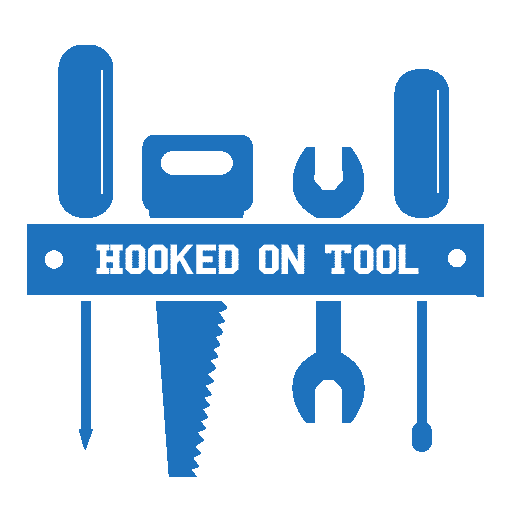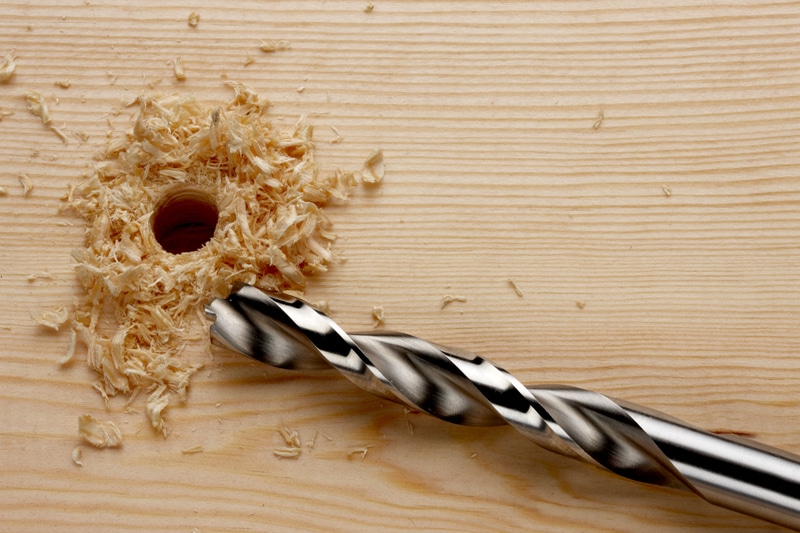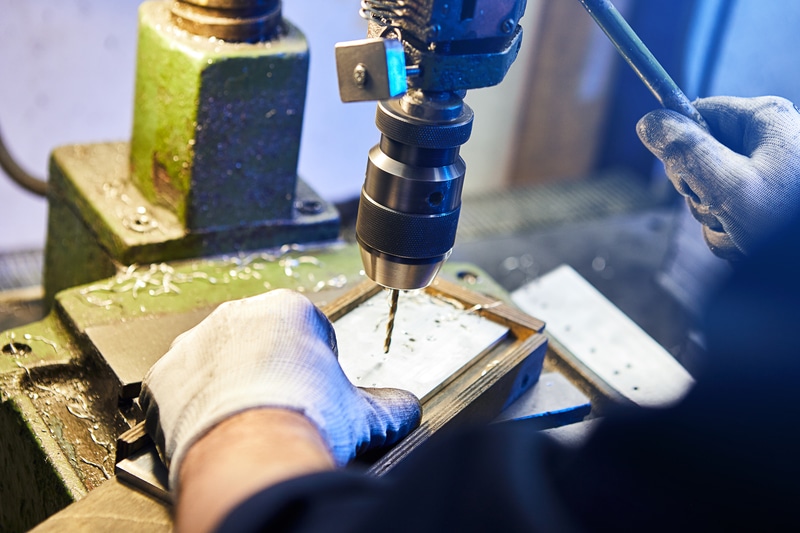
Drilling holes in sheet metal is always a tough job for most since the sheet metal is not only thin, but it tends to move here and there as well.
That is certainly something that you will need to be particularly careful about. However, with the right tools and technique, you will be able to easily get through any material.
It takes a bit of time to get used to the proper technique, and seeking help from a professional is always a good idea. There is no gain in going through all of the projects by yourself.
Instead, you need to focus more on seeking some pointers from the local experts and other owners on the community forums and the official support members for your respective brands.
How To Drill Holes In Sheet Metal?
That way, you will avoid a ton of pitfalls along the road and will get amazing performance with the tools.
In addition to that, the bits and particles from the sheet metal also go around in the air, so you will need to know how to deal with the situation if you have to drill holes in the sheet metal.
A few things that you can try out to make it work for you would be:
- Hold it Tight
It would be better to place the sheet metal on a flat surface, and if you are unable to do so, it is certainly great to fix it on the surface so it doesn’t move around.
That way you can drill holes in the sheet metal accurately without facing any problems at all.
That is pretty simple, and you should not have much trouble trying to fix the sheet metal while you are drilling some holes into it. Once you get that done, you can freely move forward to the next steps.
- Mark it Right
The most common mistake that people make while drilling holes in sheet metal is not to mark it right.
While you can always point the mark with a dot, it is better to be marking the place where you want to drill into with an “X” sign to ensure that you get better accuracy.
So, you will need to take the measurements, and after that, you will need to make an “X” sign on the point where you want to be drilling a hole.
After that, you can start drilling the hole, and that should be accurately getting the job done for you without causing you any further trouble at all.
- Wear Safety Gear
Safety gear is a must to ensure that you don’t get yourself hurt while trying to drill some holes in the sheet metal.
You don’t only need the safety glasses to avoid the particles and bits from the sheet metal getting in your eyes.
Still, you will also need safety gloves to ensure that your fingers and hands are also safe from sheet metal since it can be pretty sharp at times.
Once you get that sorted out, you can finally start with the drilling.
- Chose the Right Bit
Now, you will need to choose the appropriate bit size that will fit your needs and the hole you want to create in the sheet metal.
After that, you just have to drill the hole by pointing your drill bit to the mark that you have made.
It should be working without causing you any further problems and issues for sure.
Once you get the right bit, make sure not to over-drill the hole since sheet metal is pretty thin, and you wouldn’t want to make the hole too big.
- Use A Center Punch
Next, you can also use a center punch to indent the sheet and create a dimple. This will provide you with a nice base as you start the drilling process.
Some owners also mentioned that they rely on a smaller bit to create a pilot hole. However, if you do go with this path, be sure that the smaller bit is just as strong and durable.
You will have to take it slow with the pilot hole. So, be careful and try to get your hands on the center punch, as that can prove to be better in most cases.
From there, you can just indent the marked space and then go about the drilling routine accordingly.
Nine times out of ten, you will struggle with accuracy when you don’t follow this method.
It might seem like a waste of time to some beginners, but almost every expert will prefer to go with a solid base.
From there, you will not have to worry as much about the precision and accuracy of the job. Hopefully, all errors will be addressed as soon as you follow through with these pointers.
So, be sure to keep all of these steps in mind and then start the drilling routine.
- Let The Unit Cool Down
One of the more common mistakes that people make is that they will use high RPMs and no breaks when trying to get through the metal sheet.
You should avoid this mistake at all costs, and your whole focus should be on controlling your pace.
All that you’re trying to do is to limit the speed and take it one step at a time. Letting the drill cool down after making little progress is never a bad idea.
Now, the time can vary from drill to drill, and you should make the best decision based on the temperature of the unit.
If the drill gets too hot, then your best bet is to let it cool down. Saving a bit of time and continuing with the project will only set you back in the long run as you struggle to secure a response out of the drill.
Hopefully, that will be it, and you will not have to struggle with more errors down the road. From there, you can just repeat the steps mentioned above and then proceed with the drilling.
You will not be disappointed by the final results as long as you’re patient and don’t try to rush the process. Over time, you will notice massive improvements as you’re setting up the drill.
- Reach Out To Local Experts
Seeking help from local experts is not a bad idea either. Trying to get through the project on your own can be more than just a little annoying, and you should always focus on seeking help from local experts.
They will help you through minor snags and pitfalls that you’re bound to run into on your own.
Spending a bit of time with an expert and watching physical demonstrations of the process will be better for your project and your tools.
You will not have to put extra pressure on the drill, and the final result will be far better than what you can make on your own. So, don’t hesitate to reach out to the locals when you’re stuck in these errors.
These experts will not only provide you with a better understanding of each project, but you will also notice better control over your tools.
Hopefully, that will be it, as you’re trying to drill through sheet metal. Managing a project with metal or any hard material can be a demanding job in itself.
However, there is no gain in going at the project alone and risking damage to the tools as well as your material.
Seeking guidance from an experienced individual one-on-one is much better than any online guide.
So, if you’re trying to step up your skills as a workman and need to get through more demanding projects in the future, just get guidance from locals.
They will help you out through these demanding tasks.
Wrapping Up
Ideally, you should be able to get through any sheet of metal by following these pointers. If you’re using the right equipment and safety measures, you will not have to put too much pressure on the unit.
The drill will do most of the work, and you can make your way through the metal sheet. Just be sure to control your pace, and don’t try to force your way into the unit.
Otherwise, you will end up putting your tools at risk, and the bit will get damaged in no time.
So, try to make your way slowly through the metal and take frequent breaks to allow the unit to cool down.
The best thing that you can do is to seek pointers from an expert. There is simply no gain in trying to go through these points on your own.
Instead, you can reach out to other, more experienced members, and they will make your job much easier.
If everything goes well, you will have an effortless experience when it comes to managing the project. It can take a bit of practice to get the desired precision, so be sure to put in the time.
Hopefully, you will not have to worry about damaging the equipment or the sheet when trying to get through the project.









